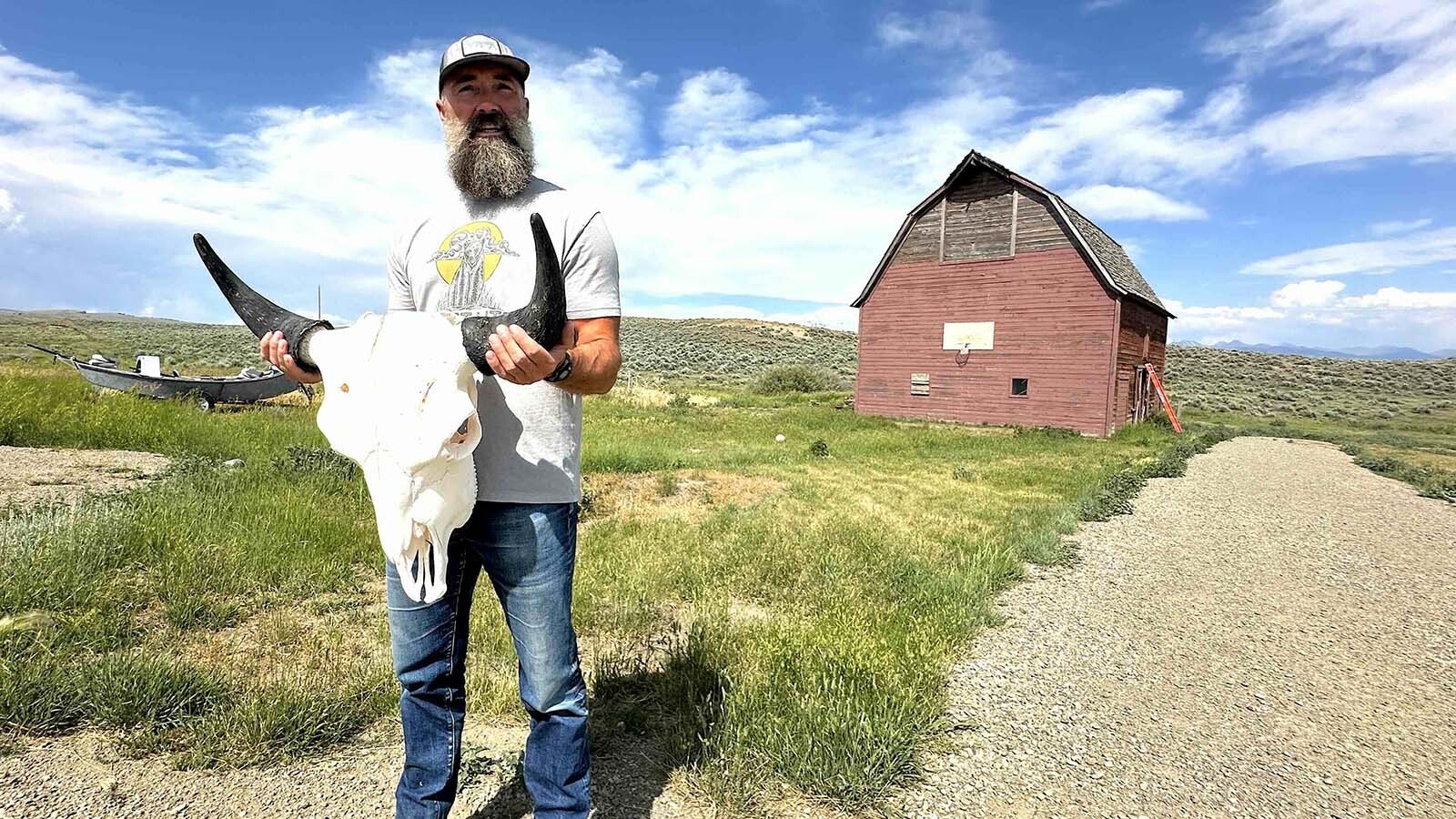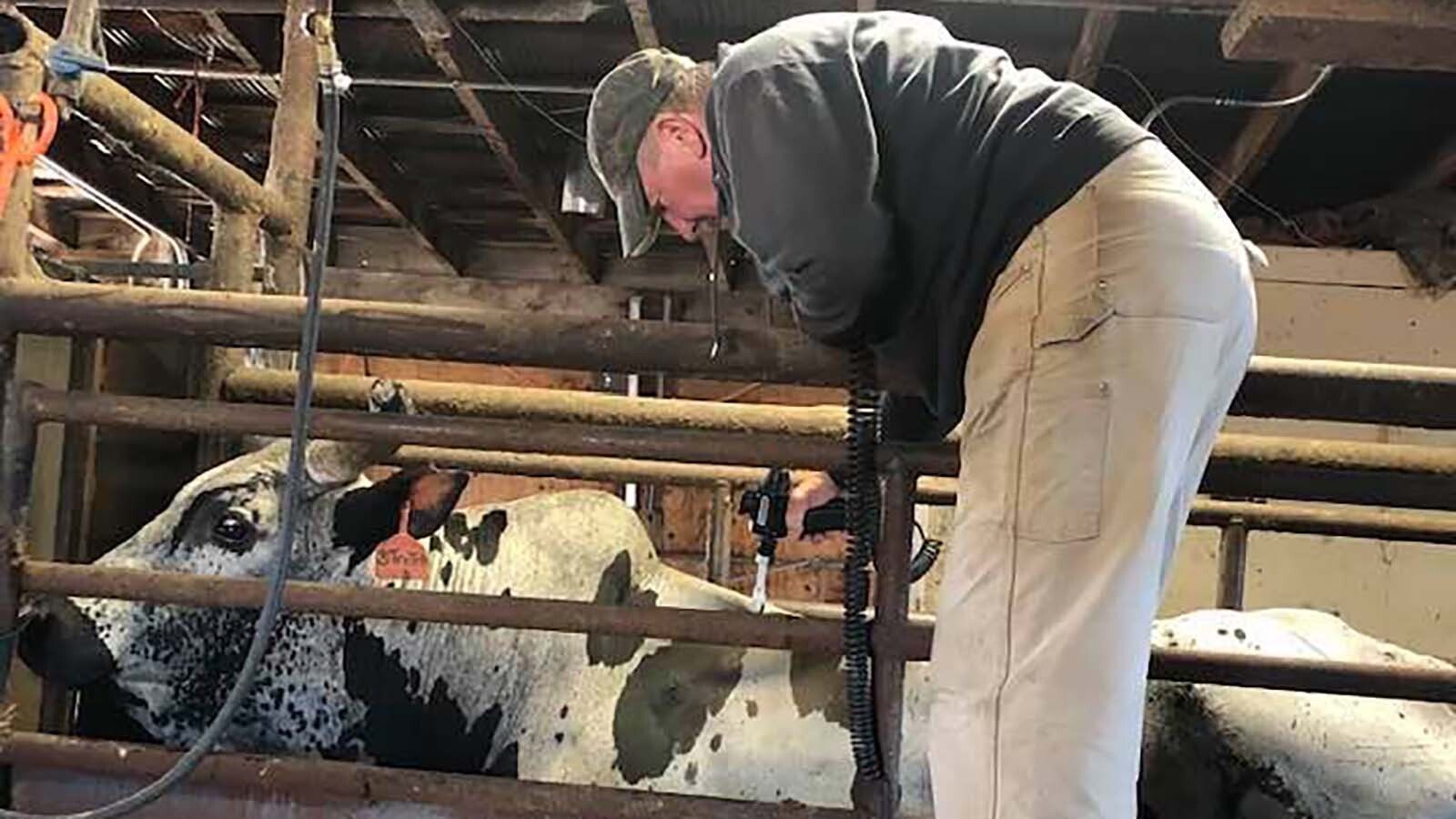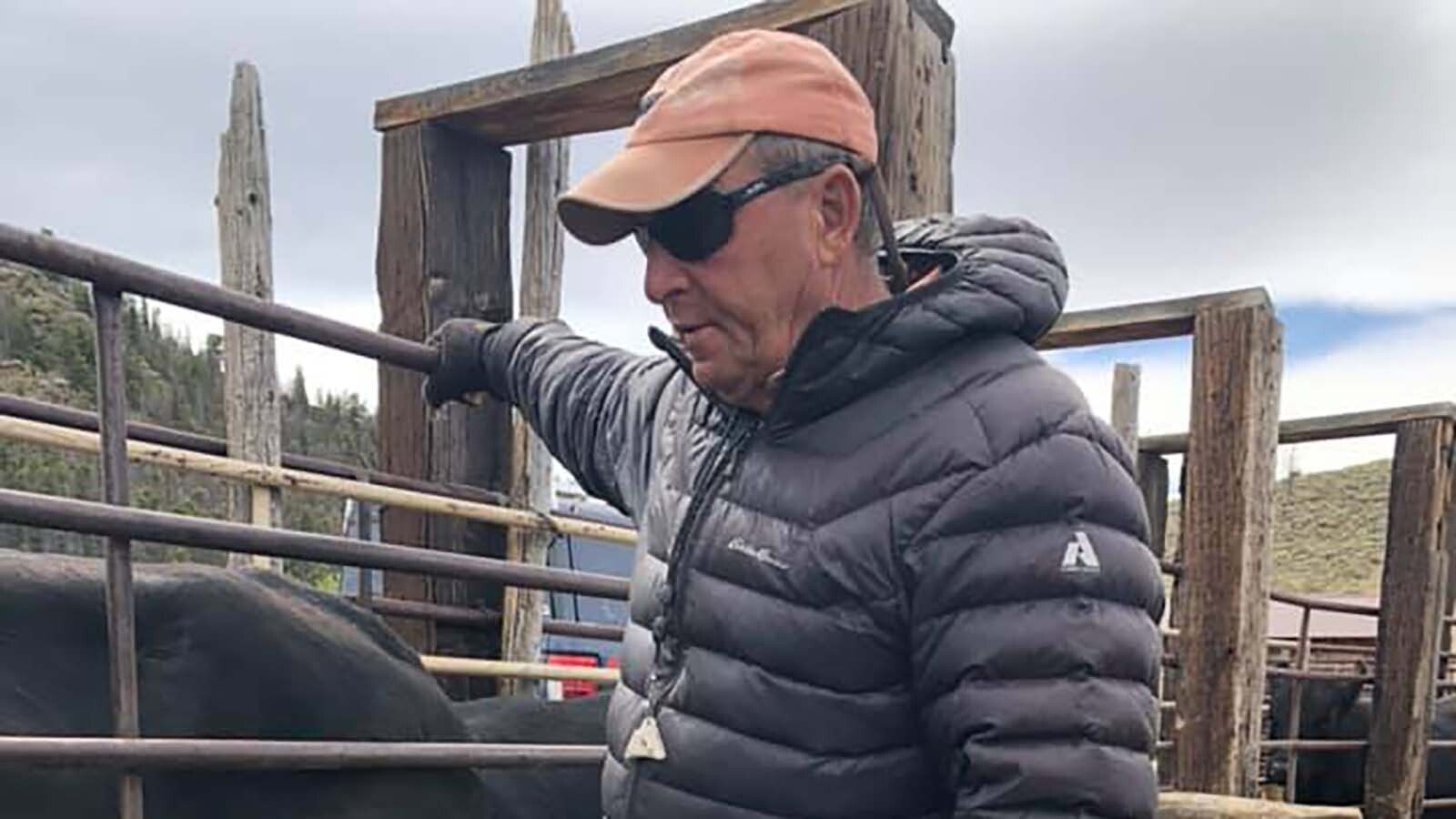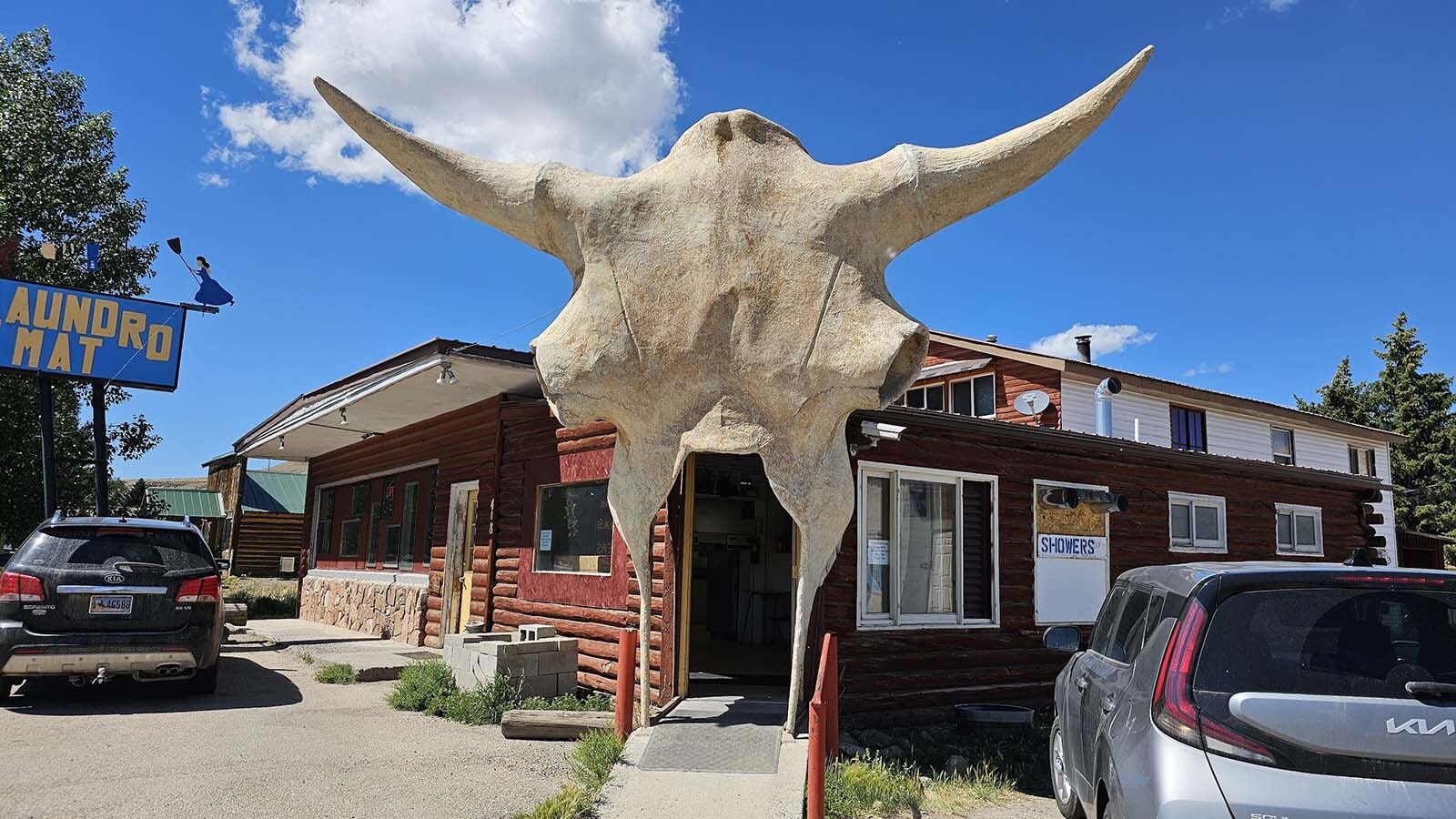Art Nicholas comes from a long line of ranchers. His father ranched in Nebraska. His grandparents in Kansas.
So, when he had the opportunity to buy a ranch of his own, he jumped at the chance, and he and wife Catherine became owners of Wagonhound Land and Livestock in 1999.
“I think he really understood that where he was happiest was a life lived on the land,” daughter Andrea Nicholas Perdue said. “He had the opportunity, and that's what he really wanted to do.”
The historic Douglas, Wyoming-area ranch has grown to 300,000 acres under the Nicholas’ vision to honor tradition, preserve the land and use innovative concepts stewarding the ranch into the future.
As part of their commitment to innovation, education and the continued prosperity of Wyoming’s agricultural heritage, the couple recently donated $2.5 million to the University of Wyoming that will empower the university’s Ranch Management and Agricultural Leadership Program, fueling change and supporting future leaders in ranch management and agriculture statewide.
“Wagonhound Land and Livestock is thrilled to partner with the University of Wyoming with our investment in the Ranch Management and Agricultural Leadership Program,” said Nicholas Perdue, also the CEO of Wagonhound Holdings. “As stewards of the land and advocates for sustainable agriculture, we are excited to contribute to the cultivation of future leaders in the industry.”
Ranching Runs In The Family
Art grew up on a ranch near North Platte, Nebraska, where his father was the general manager. After serving in the Navy, he went on to get a degree in finance from San Diego State University.
“That was a really great way to get an education and serve your country,” Nicholas Perdue said. “That was the history of our family. We were ranchers and in the service, ever since we immigrated to the country in the 1880s.”
Art has more than 40 years of experience in investing, co-founding Nicholas-Applegate Capital Management and serving as chairman and CEO. Before that, he was a portfolio and bank manager.
Catherine has more than 30 years of experience as an investment analyst and portfolio manager. She founded Nicholas Investment Partners, which is advised by Art. Previously, she served as global chief investment officer for Nicholas-Applegate Capital Management.
Their success in the financial sector led to the eventual purchase of Wagonhound. Headquartered 20 miles south of Douglas, the ranch touches three counties: Converse, Albany and Carbon. It supports 5,000 cows and 7,500 feedlot cattle throughout the year. The ranch’s vision statement, “Steadfast in Maintaining the Highest Standards,” reflects a commitment to remain steeped in history, yet aggressive in leadership.

Pure Wyoming History
Much about the ranch has not changed since the 1800s.
Tiny wooden schoolhouses from decades past stand proudly intact; the stagecoach stop where a notorious Wyoming train robber fought his last gun battle hides behind a grove of trees next to the old post office. And the 1880s bunkhouse and red barn still stand guard at the ranch’s main gate.
It is named after Wagonhound Creek, which received its name due to the number of wagons on the nearby Oregon Trail that, while crossing the creek, broke their “hounds,” the part of the wagon that connects the tongue and axle. The ranch brand, which dates back to territorial days, is the quarter circle, bar, quarter circle, a loose interpretation of the hound of a wagon.
“As soon as I set foot on the ranch that’s where I’m absolutely the most happy,” Nicholas Perdue said. “Just to smell the air and be more connected to nature.”
Creating An Economically Viable Operation
Run much the same manner as cowboys did more than a century ago, Wagonhound Land and Livestock is first and foremost a working cattle operation. However, it also maintains a self-sufficiency rare among modern cattle ranches.
This is because, while it began as just cattle, it has grown to include horses, farming, outfitting and hospitality. The integration between these separate operations allows Wagonhound to be a self-sustaining business founded on Wyoming ranch traditions with the willingness to implement cutting edge ideas in education, technology, and management of the ranch wildlife and habitat.
“Wagonhound has really been built over the last 20 years,” Nicholas Perdue said. “It's been an amalgamation of several different ranches to encompass the footprint that it sits on today, which is where we think we can run a scale operation, a profitable operation. It took a long time to build it to that place and then have it run as one holistic, mostly contiguous operation.”
At Wagonhound, the Nicholas family and managers strive to make it as diverse as its landscape in order to be an economically viable operation, one that will serve the country for generations. Nicholas Perdue said the ranch has gone through three major phases – building, stabilization and now growth.
“I think each time we brought a new piece of land into the fold of the larger organization, the first focus was rest and regeneration,” she said of the building phase. “Let's really focus on that land and wildlife stewardship of that piece of property, and how we can make that flourish at its best. That's always been something that's really important, as opposed to just increasing head capacity. And then as that folds into the larger system as a whole, we started focusing more on sustainability.”
Evolution
It was in the sustainability phase that they began looking at different business models to find the right place in the market for their product.
The cattle operation includes holistic management of purebred Red Angus cattle from cow/calf to feedlots, low stress cattle handling technologies, advanced herd health practices, and an expansive farming operation to build customized feeding programs for each faction.
“That's been something that has been really important to us, to own that whole value chain,” she said. “That's given us a lot of ability to really control that story. So we like being in that place.”
As they grew the cattle side of the ranch, they began to look at the cost of their inputs and decided to begin producing some things internally. One of those was horses, with the other being hay for the animals.
“Horses are a really big input, and a really great horse is hard to come by, so we decided to breed them, grow them and train them ourselves,” Nicholas Perdue said. “That led into a business in and of itself.”
The horse program operation boasts leading sire WR This Cats Smart, and many of the ranch’s young horses are champions in the Reined Cow Horse, American Quarter Horse and Ranch Horse associations. State-of-the-art facilities and programs also support continued growth, including a spacious indoor arena for winter training of the remuda.
Growing Interest
On the farming side is 7,500 acres that produce primarily alfalfa, with rotating crops of corn, corn silage, barley hay, barley grain and oats. The farm has 40 computerized, controlled center pivot irrigation systems covering approximately 5,000 acres. The irrigation systems and sufficient water availability allows for three cuttings annually.
“We used to buy hay, but we're in a really great hay production area, and it made sense for us to develop our own farm,” she said.
The outfitting business has been a part of the ranch for at least 15 years, folding into the land and wildlife stewardship. It offers elite, trophy outfitted hunts for elk, whitetail and mule deer, antelope, black bear and waterfowl.
“It has always been a really important part of who we are and the offerings that we have,” NIcholas Perdue said.
Most recently, they began looking at ways to attract guests during the summer months. This led to Reid Creek Lodge at Wagonhound. The 8,000 square foot lodge accommodates up to 22 guests. A private chef prepares meals and there are a variety of activities available including hiking, fishing, horseback riding and e-biking.
“We weren't really utilizing those assets to max capacity, so it was really an opportunity to build out a business that was synergistic with something that we were already doing [with the outfitting],” she said.
About That Future …
With the land and animals at peak production, Wagonhound is now in the growth, or innovation, phase.
“Now we have all the different properties working together, and each has its place within that bigger organization, then you can optimize that innovation, and this is something that gets me really excited,” Nicholas Perdue said. “That’s one of the things that I love about this partnership with the University of Wyoming, because this is what they should be looking at as well. What are the next steps of innovation within the Ag space? That's where the university and private sector can really help each other.”
At Wagonhound, Nicholas Perdue said the managers of each operation are open and flexible to new ideas and trying different things.
“We're not constantly changing, but they're very open minded to the new things that we could be looking at, and that's been really fun because I think sometimes we do things a certain way, and we do it that way because we've always done it that way, and then that's sometimes a hard wall to break through,” Nicholas Perdue said. “But I think the team that we have in place at Wagonhound is really open and innovative.”
On the farming side for example, there's been a focus on fertilizer alternatives, both due to cost and environmental impact.
“We’ve looked at some really creative ways to use alternative fertilizers on the fields, both from spreading manure from our feedlots to using a couple of the different fertilizer alternatives that I think are fairly new in the market.”
They’re also looking at systematizing processes to support operations, as Nicholas Perdue said this is one of the few businesses where data isn’t implemented as much as it could be.
“There's also some new grazing platforms that I think can be really interesting,” she said. “And while it's hard to use those predictive tools to tell you what to do, it's nice to have another individual providing input. It's just another data point in your conversation as you're trying to figure out what your plan is for that upcoming year.”
Technology within water systems is also important and she said there are some sophisticated programs available that would use satellite connectivity to access water monitoring information in areas with no Wi-Fi or cell coverage.
“That could be a huge opportunity for a ranch like us, where that's very time consuming from a personnel perspective,” she said. “We've tried to really keep our finger on the pulse of new Ag tech companies that are coming to market, really network within our peer group who's doing what, what's working, what's not working. Working both from that rangeland management perspective, the software perspective and also the business model perspective.”
Collecting Place For New Ideas
Nicholas Perdue feels the program at the University of Wyoming will be a natural collecting place for new ideas within the industry.
The $2.5 million gift from Art and Catherine creates the Wyoming Ranching Excellence Fund at the UW College of Agriculture, Life Sciences and Natural Resources and was doubled to $5 million by a state matching investment from the Wyoming Legislature.
The fund will support students, faculty, program ambassadors, industry engagement and a yearly Ranch Managers Summit.
“This generous gift from Art and Catherine Nicholas burns the Wagonhound brand on UW’s Ranch Management and Agricultural Leadership Program in perpetuity,” said Kelly Crane, interim dean of the College of Agriculture, Life Sciences and Natural Resources. “This partnership provides the capacity and incentives to deliver a truly exceptional ranch management program at UW.”
The ideas for the Ranch Management and Agricultural Leadership Program began in 2018 at the UW Partnership Summit that took place at the Wagonhound.
Its goal was to enhance the relationships between UW and Wyoming ranchers and land managers so that UW could be more responsive to the needs of the industry. It was a venue for UW leaders to listen to the contemporary challenges and opportunities facing ranchers and ranch managers.
Initially launched in 2021, the program provides future generations of ranchers and agricultural producers with in-depth, hands-on programs that honor the tried-and-true while developing the technologies of tomorrow.
The nature of ranch management and agricultural leadership today requires professionals to have an integrated understanding across a broad array of disciplines while demonstrating strong interpersonal skills that allow for effective teamwork, collaboration, and development and retention of talent – all of which are addressed in the program.
“Art and Catherine’s gift, matched by the state, stands as a testament to the enduring commitment to excellence in ranching and agriculture,” said John Stark, president/CEO of the UW Foundation. “Thanks to this partnership, we will cultivate a legacy of leadership, sustainability and prosperity for generations to come.”
The program provides a practical, real-world, multidisciplinary education to Wyoming’s students and professionals in ranch management and agricultural leadership. It seeks to integrate classroom learning with practical experience and to connect students with producers and industry professionals. The program also facilitates an annual seminar series, Ranching in the West.
The Ranching in the West Seminar Series is held at community colleges throughout the state.
The series offers insights into how Wyoming ranches and businesses and agencies are dealing with real-world challenges. These seminars are open to both UW students and the public and offer a preview of topics to be addressed in the undergraduate program, including public land partnerships, energy development, family run businesses and water management.









